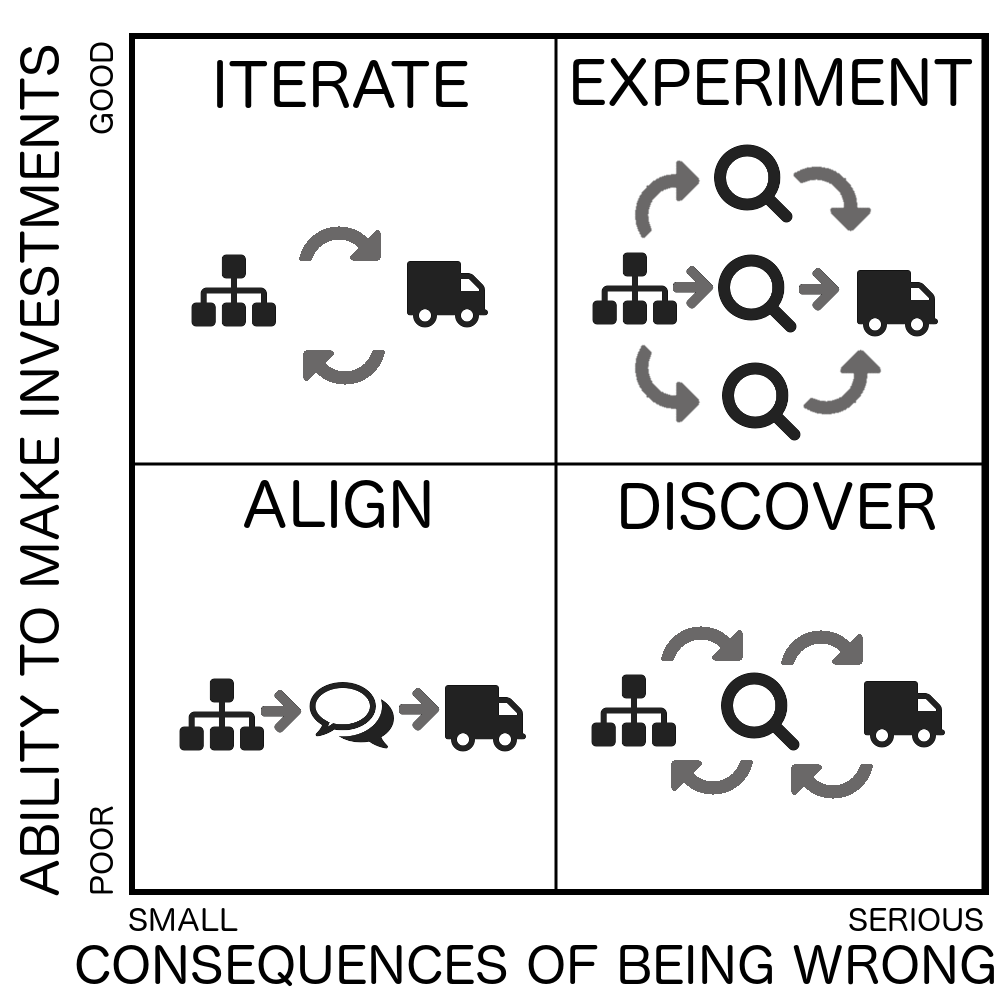Ingrid Domingues, Johan Berndtsson and I met up in July this year to compare the various approaches to Impact Mapping and community feedback and investigate how to get the most out of this method in different contexts. The conclusion was that there are two key factors to consider for software delivery using impact maps, and recognising the right context is crucial to get the most out of the method. The two important dimensions are the consequences of being wrong (making the the wrong product management decisions) and the ability to make investments.

These two factors create four different contexts, and choosing the right approach is crucial in order to get the most out of the method:
- Good ability to make investments, and small consequences of being wrong - Iterate: Organisations will benefit from taking some initial time defining the desired impact, and then exploring different solutions with small and directed impact maps that help design and evaluate deliverables against desired outcome.
- Poor ability to decide on investments, small consequences of being wrong - Align: Organisations will benefit from detailing the user needs analysis in order to make more directed decisions, and to drive prioritisation for longer pieces of work. Usually only parts of maps end up being delivered.
- Good ability to make investments, serious consequences of being wrong - Experiment: Organisations can explore different product options and user needs in multiple impact maps.
- Poor ability to make investments, serious consequences of being wrong - Discover: The initial hypothesis impact map is detailed by user studies and user testing that converge towards the desired impact.
We wrote an article about this. You can read it on InfoQ.


